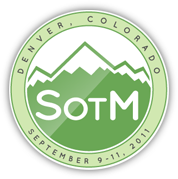Shortest Hyperpath search for public transportation: A java web application
In cities where public transport does not follow a schedule and the user can only know the frequency of each route, a web tool was programmed to indicate the shortest routes where it’s considered more than one mode of transport and more than one possible combination of modes to reach a given destination. The web application was made for the University City campus of the National Autonomous University of Mexico, where the public transports available are buses, bicycles, in addition to walking tours.
To find the shortest hyper paths the algorithm Shortest Viable Hyperpath (SVH) of A. Lozano & G. Storchi (Lozano, A. & Storchi, G. (2002), `Shortest viable hyperpath in multimodal networks', Transportation Research Part B 36, 853-874.) was adapted and programmed in Java. This Algorithm considers the frequency of buses, as well as travel times by foot, bicycle and bus. The result is a Pareto-Optimal set of ordered pairs where the first element denotes the travel time while the second denotes the number of modal transfers. Is in this set the where the user will choose the option that suits the best.
To feed the algorithm and display the results it was build a spatial database containing geographic information on bus routes, pedestrian and bicycle path. This database was constructed from the network of each one of the bus, bicycle and pedestrian routes. After some space operations, all the networks were combined to create an hyper network, where the arcs with only one tail-node and more than one head-node represents the frequency of bus lines that pass through a node. While the arcs with one tail-node and one head-node represents the travel time of each mode of transport.
The web portal is hosted in a Linux server, the way it works is this: The user input a source, destination and a maximum number of modal transfers, with this information the algorithm begins to create hyperpaths from a PostGIS database and discard those that are to slow or not viable. Once found the Pareto-Optimal results are displayed in a map server and written instructions are show.
David López Flores
Degree in mathemathics from the Universidad Nacional Autónoma de Mexico. I have a master in transport engineering. I am currently have a scholaship at the Laboratory of Transportation, Engineering Institute
Pablo López
Degree in phisics from the Universidad Nacional Autónoma de Mexico. I have a master in Geomatics. I am currently a researcher in the Centro de Investigación en Geografía y Geomática











